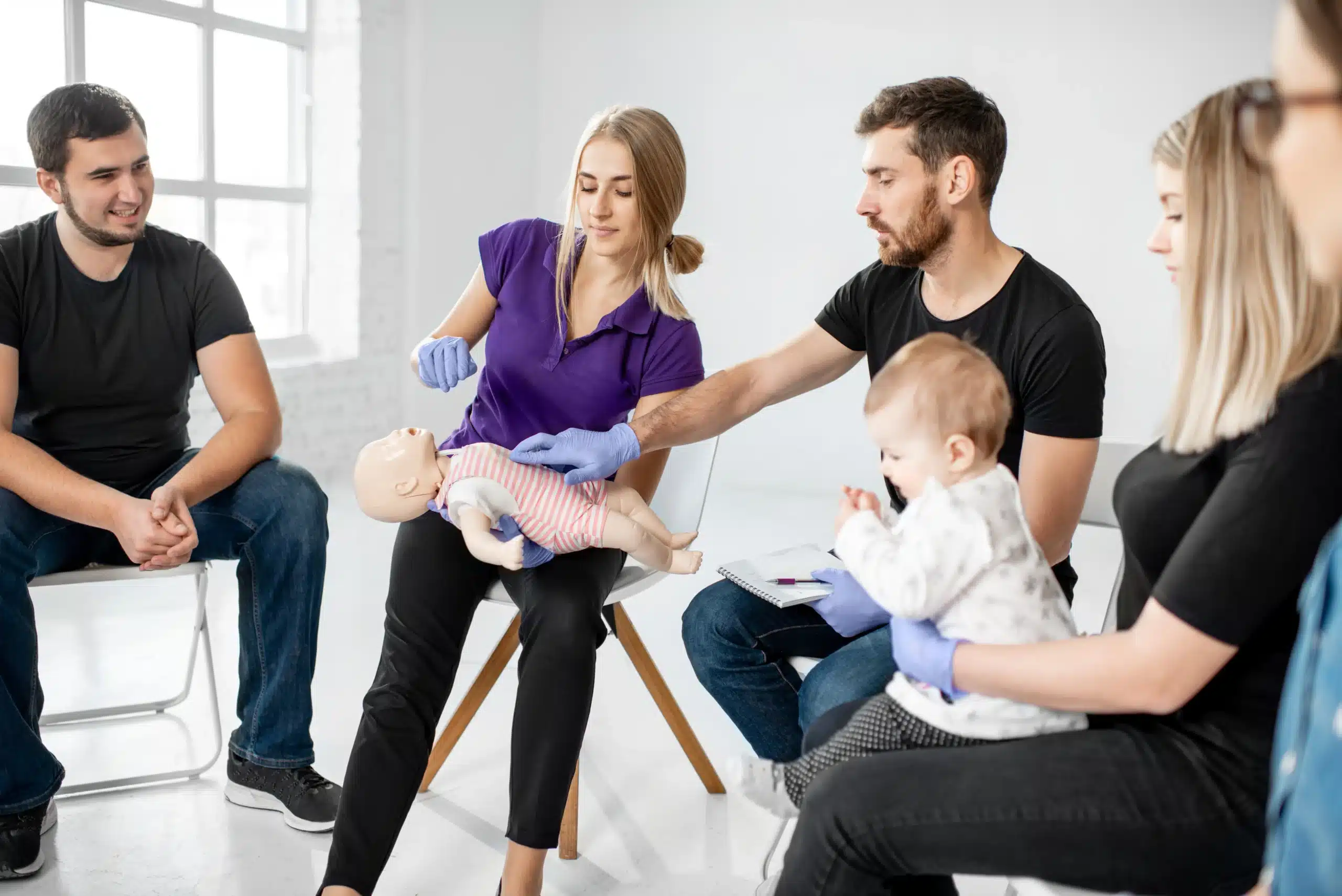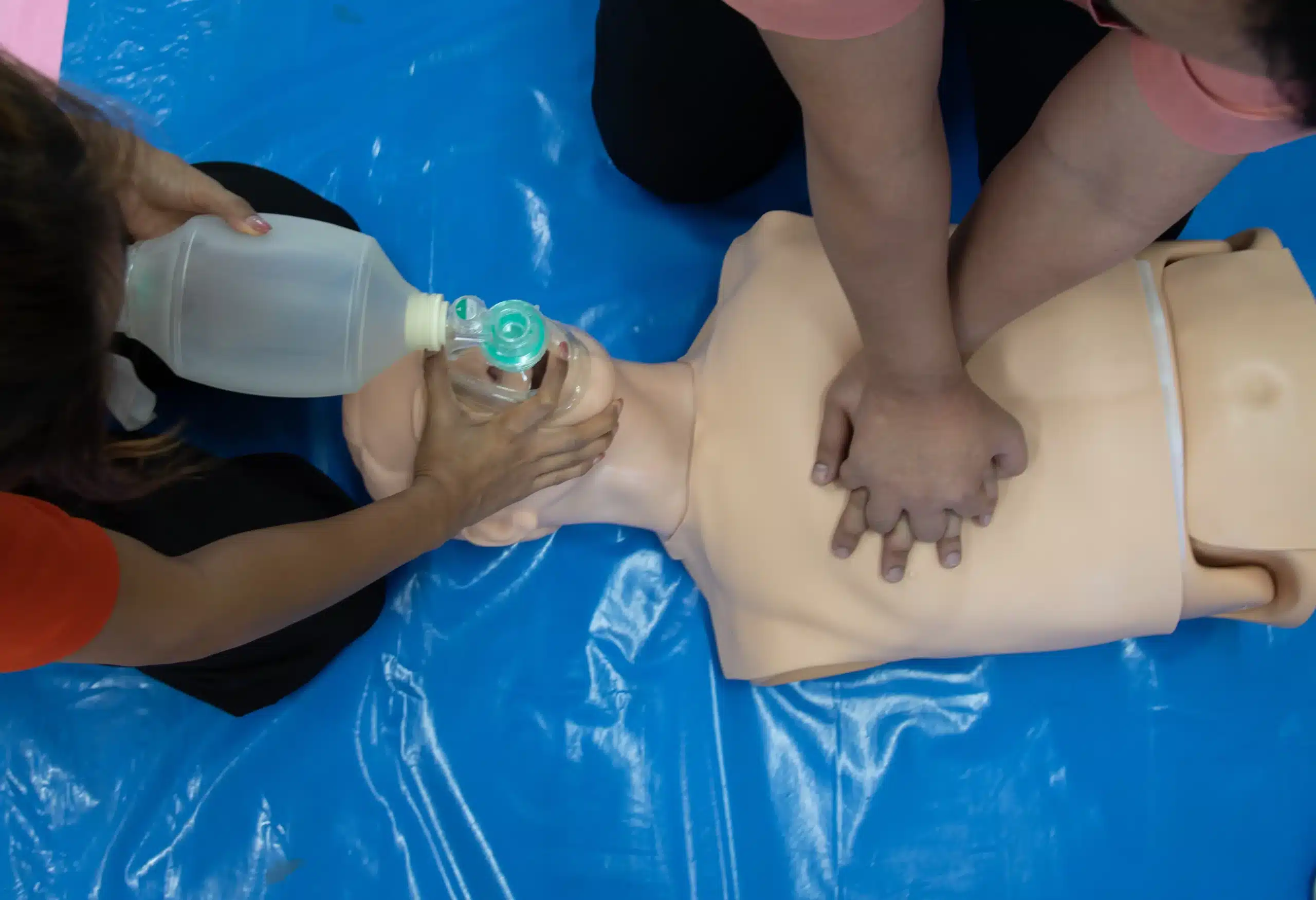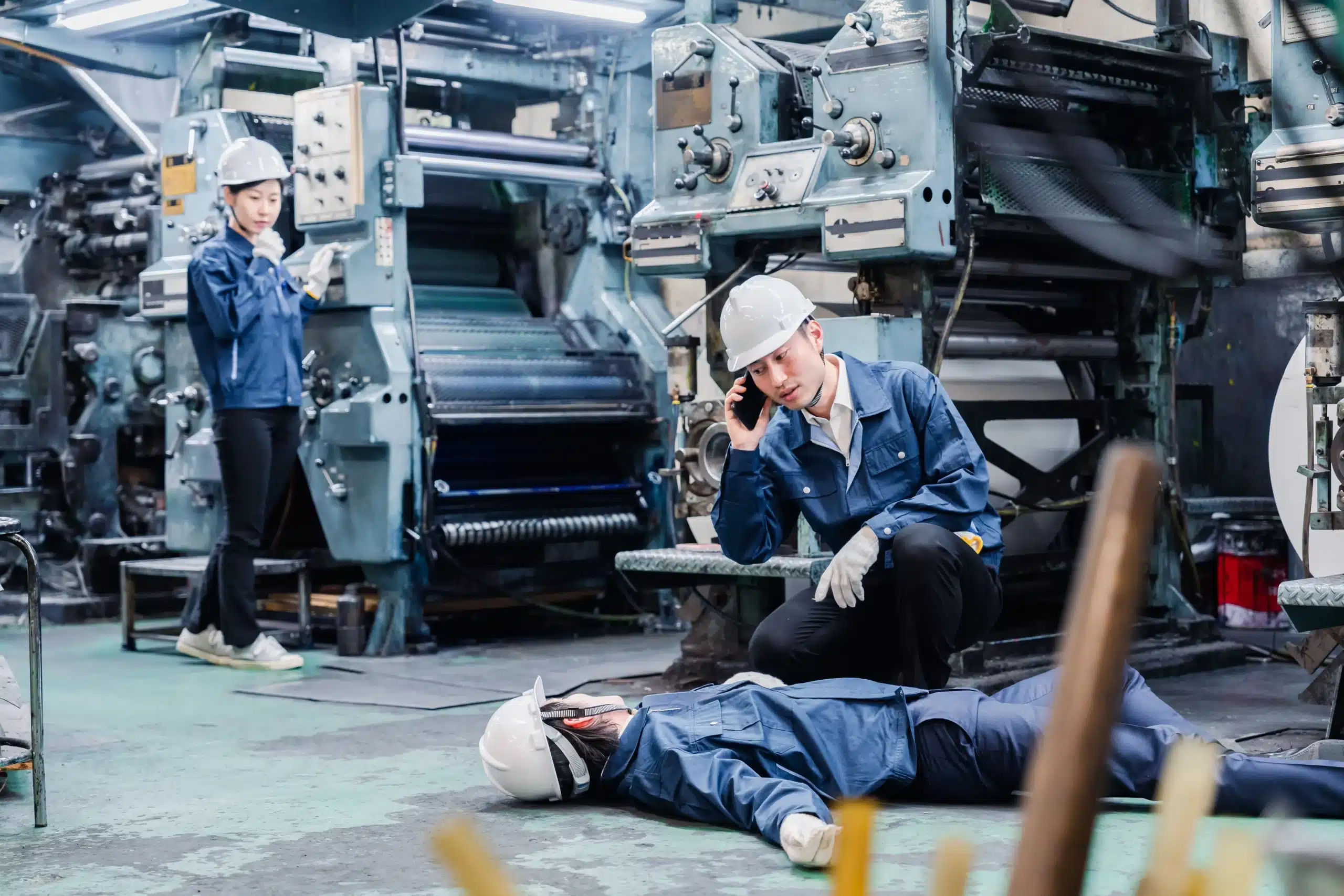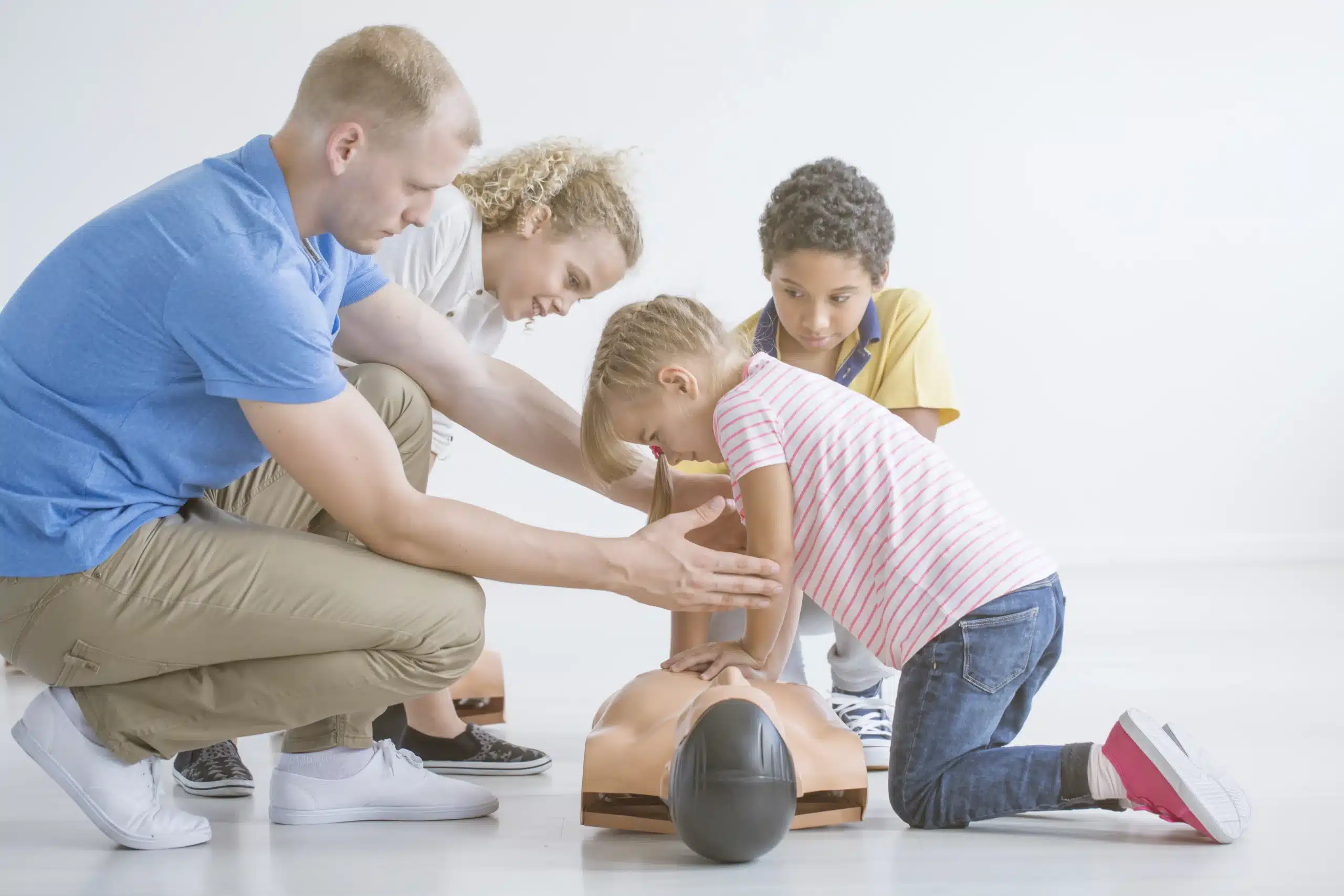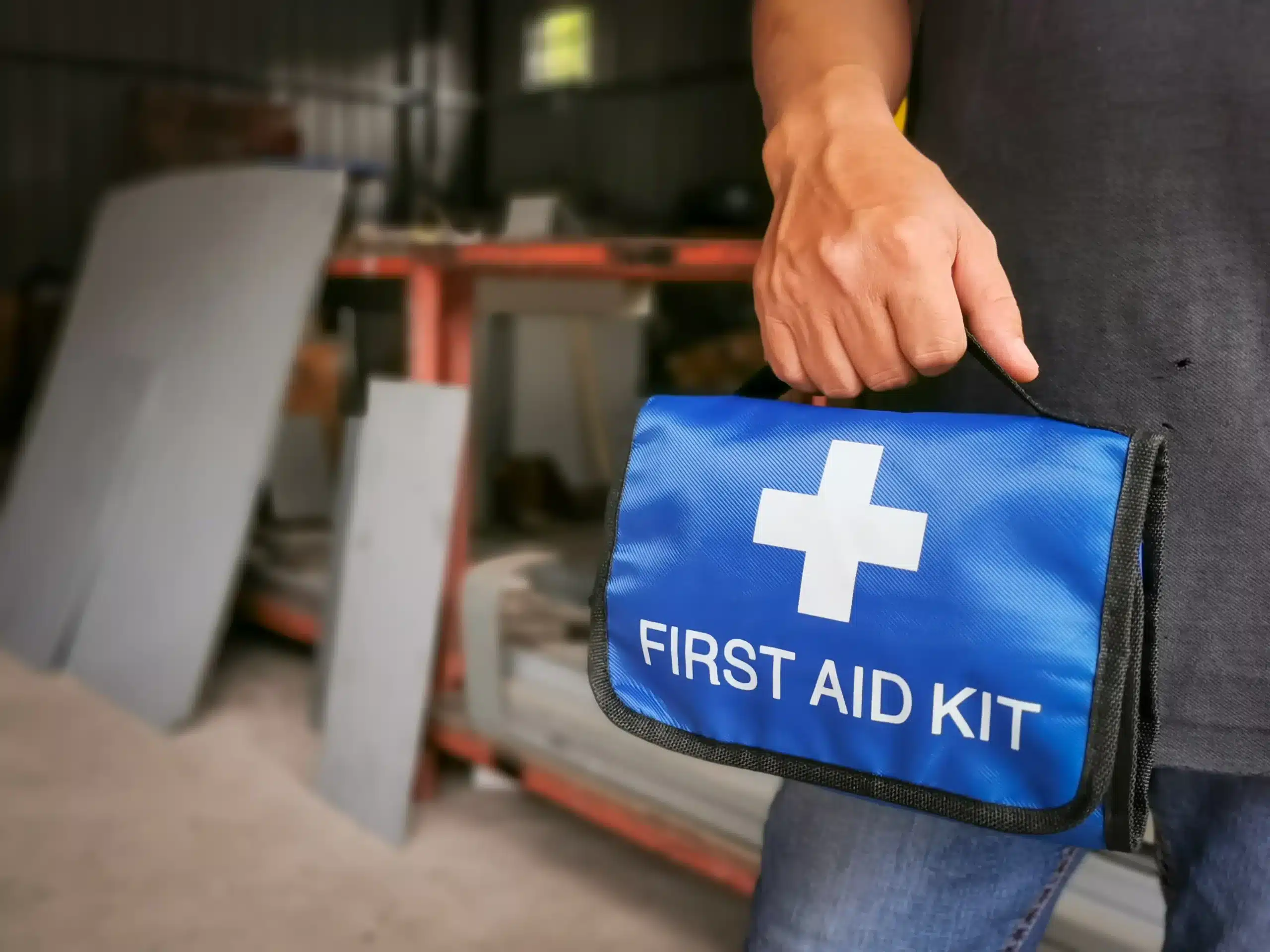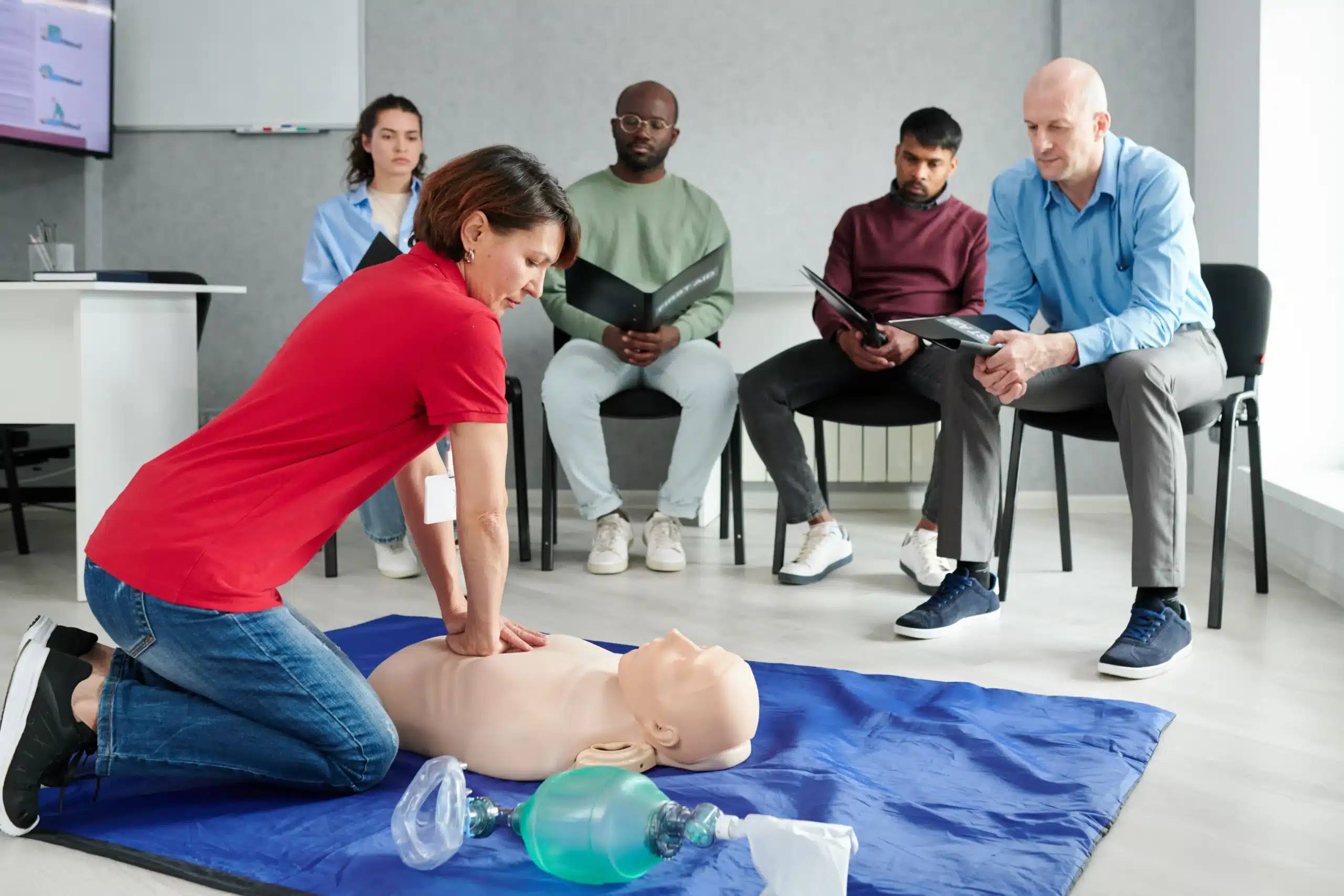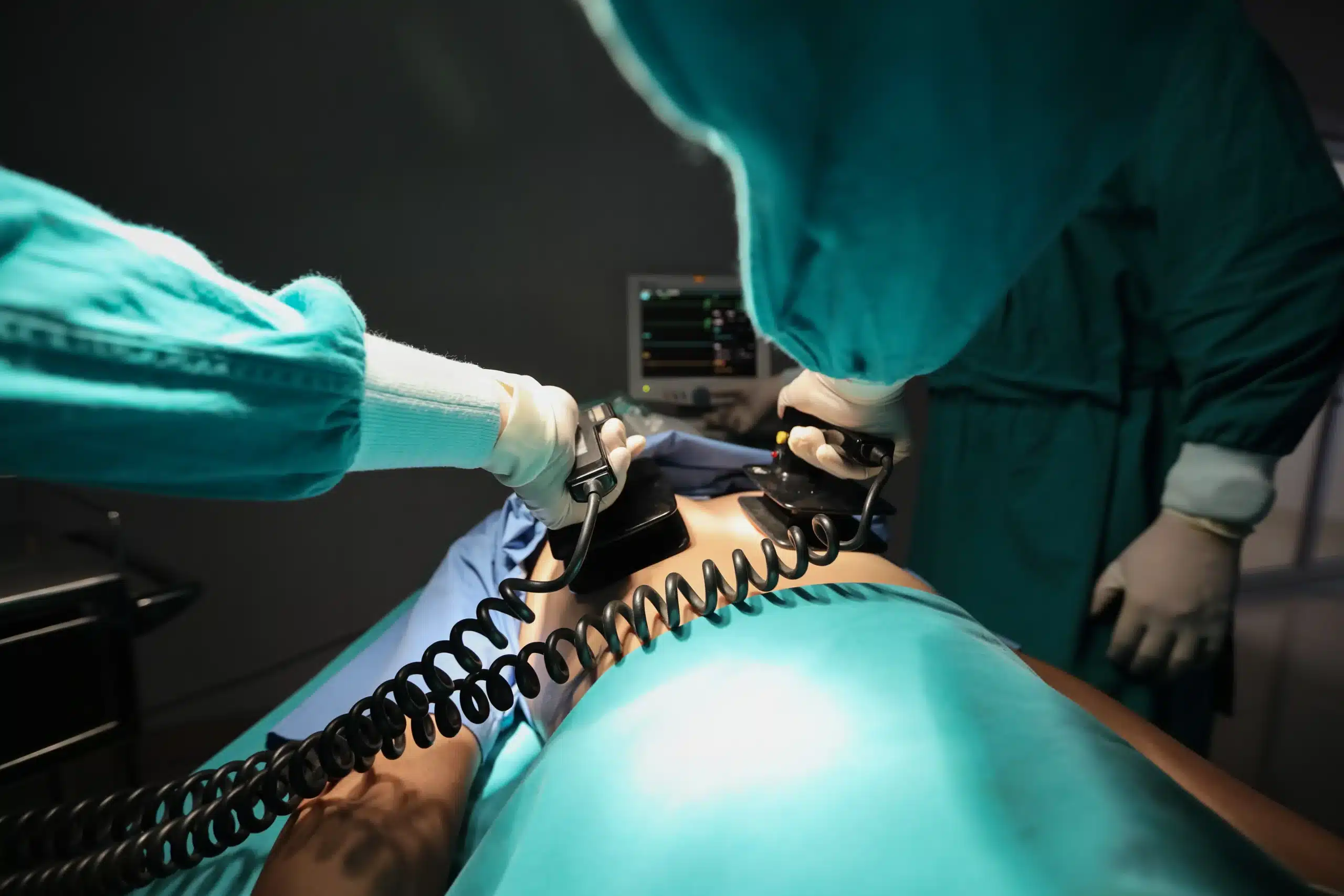Emergencies can happen anytime, anywhere. Being equipped to handle them can make all the difference. BLS certification empowers you to respond effectively to life-threatening situations, providing essential care until professional help arrives. This article will walk you through the ins and outs of BLS certification nearby. We’ll cover the core skills you’ll learn, the different training formats available (in-person, blended, and online), and how to choose the right course for your needs. We’ll also discuss the benefits of BLS certification for various professions and individuals. Whether you’re a healthcare provider, a teacher, a coach, or simply someone who wants to be prepared, this guide will help you understand the value of BLS certification and how to get certified.
Key Takeaways
- BLS certification is essential for healthcare providers and valuable for everyone: It equips you with the skills to respond to medical emergencies, including CPR, AED use, and relieving choking. Find a course format—in-person, blended, or online—that suits your needs.
- Finding the right BLS course involves several factors: Consider cost, location, schedule, and the certifying organization when making your decision. Explore options like Sunnyvale CPR Classes, which offers a low-price guarantee and group discounts.
- Maintaining your BLS skills and certification is an ongoing process: Renew your certification every two years and consider additional training like ACLS or PALS to expand your knowledge and stay current with the latest guidelines.
What is BLS Certification?
Basic Life Support (BLS) certification equips you with the skills to respond to life-threatening emergencies. It’s a crucial credential for healthcare providers and anyone who wants to be prepared to help in a crisis. BLS focuses on providing immediate care until more advanced medical personnel arrive, often involving CPR, using an AED, and relieving airway obstructions. Holding a current BLS certification signifies that you’ve received training based on the latest American Heart Association guidelines for providing high-quality care.
BLS Training: Skills You’ll Learn
BLS training covers core skills essential for responding to various emergencies. You’ll learn how to perform single- and multiple-responder CPR and use an AED. The training also emphasizes recognizing life-threatening situations, like a heart attack or stroke, and providing appropriate ventilation techniques. Airway management is another key component, teaching you how to help someone who is choking. These skills empower you to provide immediate, potentially life-saving care in those first few critical minutes.
Who Needs BLS Certification?
While often associated with healthcare professionals like doctors, nurses, and EMTs, BLS certification is valuable for a broader audience. Anyone working in healthcare, including medical assistants, dental professionals, and physical therapists, benefits from this training. It’s also essential for those in roles requiring CPR and first aid certification, such as lifeguards, childcare providers, coaches, and teachers. Even if not required for your job, BLS training can provide peace of mind, knowing you can assist family, friends, or even strangers during a medical emergency. Consider getting certified if you’re interested in a healthcare career or simply want to be prepared to make a difference.
Find BLS Certification Courses Near You
Finding the right BLS certification course means understanding your options. Let’s explore a few avenues:
Local Training Centers
Hospitals, community colleges, and dedicated training centers often offer in-person BLS certification courses. Organizations like the American Red Cross provide comprehensive training designed for healthcare professionals—including nurses, physicians, and EMS personnel—equipping them to respond to breathing and cardiac emergencies. These local classes offer hands-on training and direct interaction with instructors. A quick online search for “BLS classes near me” can yield several local options.
Online Search Tools
Beyond a basic search, several online tools can help you locate BLS courses. Some websites specialize in aggregating CPR and first-aid class information, allowing you to filter by location, date, and certifying organization. These tools simplify your search and let you compare different course offerings. Online BLS courses have also become a popular option, offering flexibility for busy professionals. These courses allow healthcare providers to complete their training at their own pace and from any location with internet access. Many institutions, including the American Healthcare Academy, offer online BLS renewal courses as well.
BLS at Sunnyvale CPR Classes
Sunnyvale CPR Classes offers AHA-compliant BLS courses designed for healthcare professionals and other personnel who need to perform CPR and other basic cardiovascular life support skills. Our courses cover various in-facility and prehospital settings. We understand the demands of healthcare professionals and strive to make our courses accessible and convenient. We also offer a low-price guarantee for our courses in Santa Clara County. Check out our website for more information on our BLS course offerings and how we can help you achieve your certification goals.
Choose the Right BLS Training Format
Finding the right BLS training format depends on your learning style, schedule, and budget. Let’s break down the most common options: in-person, blended learning, and online courses. Each has its own set of advantages and disadvantages, so understanding these will help you make the best choice.
In-Person Classes: Pros and Cons
In-person BLS training offers a structured learning environment with face-to-face interaction with an instructor. This format excels at providing hands-on practice and immediate feedback, which are crucial for mastering CPR techniques. You’ll also have the opportunity to ask questions and learn from your classmates. However, in-person classes require a greater time commitment, as you’ll need to travel to a specific location and attend the entire session. This can be a challenge for busy professionals or those with inflexible schedules. If you prefer a more traditional learning environment and value direct interaction, in-person classes might be a good fit.
Blended Learning: Benefits
Blended learning combines online learning and in-person skills practice. This approach allows you to learn the theoretical material at your own pace through online modules, videos, and quizzes. Then, you attend a shorter in-person session focused on hands-on training and skills assessment. Blended learning offers more flexibility than traditional in-person classes while still ensuring you develop the necessary practical skills. This format is ideal for those who want some flexibility but also value the hands-on aspect of learning CPR.
Online Courses: Flexibility and Limitations
Online BLS courses offer the ultimate flexibility, allowing you to complete the training from anywhere with an internet connection. This is particularly appealing for those with demanding schedules or limited access to physical training centers. However, online courses may fall short on hands-on practice, which is essential for developing muscle memory and confidence in performing CPR. While some online programs offer virtual simulations, they may not fully replicate the experience of working with a real person. Another challenge with online courses is staying up-to-date with the latest guidelines, which can change periodically. Make sure to choose a reputable provider that offers updated content and aligns with current standards. If maximum flexibility is your priority, online courses are a good option, but be sure to supplement them with hands-on practice whenever possible.
What to Expect in a BLS Course
So, you’ve decided to get your BLS certification—great choice! Knowing what to expect can help you feel prepared and confident going into your training. Here’s a rundown of what a typical BLS course covers:
Course Duration and Key Topics
A BLS Provider Course from the American Heart Association takes about 4.5 hours. This includes both instruction and hands-on practice. You’ll learn to quickly recognize life-threatening emergencies like heart attacks and strokes. The curriculum also covers giving high-quality chest compressions, delivering proper ventilation (rescue breaths), and using an AED. Airway obstruction (choking) is another critical component.
Hands-on Practice and Scenarios
BLS courses aren’t just lectures. Hands-on practice is a major part of the learning experience. You’ll work with training equipment like mannequins and AED trainers to simulate real-life scenarios. This hands-on training is essential for building muscle memory and confidence. Expect to practice CPR techniques, using an AED, and relieving airway obstructions.
Exams and Evaluation
To earn your BLS certification, you’ll need to demonstrate your skills and knowledge. This typically involves a skills test where you perform CPR and use an AED on a manikin. There might also be a written exam covering the course material. The goal is to ensure you’re fully prepared to handle real-world emergencies. By following the guidelines for AHA BLS Renewal, you can stay up-to-date on the latest procedures and maintain your certification. At Sunnyvale CPR Classes, we make sure you’re completely ready to pass your exams and confidently use your BLS skills.
BLS Certification Costs
Getting BLS certified is an investment in your skills and ability to respond to emergencies. Understanding the costs involved can help you budget effectively. This section breaks down the typical price range for BLS certification, explores available discounts, and highlights Sunnyvale CPR Classes’ commitment to affordability.
Average Price Range
BLS certification typically costs between $30 and $150 per person. Several factors influence the final price, including the training provider, your location, and whether you choose online or in-person training. Most courses fall within the $50 to $150 range. Comparing prices from different providers is always a smart move. Resources like GB Times and Brentwood CPR Classes offer more insights into average BLS costs.
Discounts and Group Rates
Many training providers offer discounts, especially for group registrations. This can significantly lower the per-person cost, making group discounts ideal for workplaces certifying multiple employees. Some providers also have seasonal promotions or offer discounts for students and healthcare professionals. Check with local training centers like Livermore CPR Classes to explore available discounts.
Sunnyvale CPR Classes’ Low Price Guarantee
At Sunnyvale CPR Classes, we believe that high-quality BLS training should be accessible to everyone. Our low price guarantee ensures you’re getting the best possible value. If you find a lower price for the same course elsewhere, we’ll match it. Our goal is to make getting certified as straightforward and affordable as possible. We also offer discounts for group classes, making team training even more cost-effective. Explore our BLS and ACLS courses and take advantage of our commitment to affordable training. For healthcare professionals, our RQI program offers a valuable resource for maintaining your certifications.
Get Your BLS Certification
Getting your BLS certification is straightforward. Whether you’re a healthcare provider or just want to learn lifesaving skills, understanding the steps and common hurdles can make the process smoother.
Prerequisites and Steps
Basic Life Support (BLS) certification is essential for healthcare professionals like physicians, nurses, and EMS personnel, as highlighted by the American Red Cross. It’s also valuable for anyone in public safety or those who want to be prepared for emergencies. The American Heart Association (AHA) BLS course teaches participants to identify life-threatening situations, give high-quality chest compressions, provide proper ventilation, and use an AED.
There aren’t usually strict prerequisites for BLS certification. Find a course and register directly through a training provider like Sunnyvale CPR Classes. The process typically involves completing the training (classroom instruction and hands-on practice) and passing a skills test.
Common Challenges and Solutions
One common challenge is staying current with evolving guidelines and procedures, as noted by Mysterious Hub. Choose a reputable provider that uses the latest AHA guidelines, like Sunnyvale CPR Classes. Another potential hurdle is finding time for in-person training. Many providers now offer online and blended learning options, offering flexibility for busy schedules. If cost is a concern, explore group discounts or check if your employer offers reimbursement. Sunnyvale CPR Classes also has a low price guarantee, making quality training more accessible.
Maintain Your BLS Certification
Once you’ve earned your BLS certification, staying current is key. Knowing the renewal process and exploring continuing education options will keep your skills sharp and your certification valid.
Renewal Requirements
Healthcare providers must renew their BLS certification every two years. This ensures you’re up-to-date on the latest guidelines and best practices. One challenge in renewing your certification is keeping pace with evolving guidelines and procedures. Reviewing updated materials beforehand can simplify the renewal process.
Continuing Education Options
Beyond simply renewing your BLS certification, consider expanding your skillset with continuing education courses. Online BLS courses offer a convenient way to refresh core skills like CPR, choking relief, and using AEDs, all on your own schedule. You could also explore advanced training in areas like ACLS (Advanced Cardiovascular Life Support) or PALS (Pediatric Advanced Life Support) to further develop your expertise. Sunnyvale CPR Classes offers a range of courses to help you advance your training.
Top BLS Certification Providers
Choosing the right BLS certification provider is an important step. Several respected organizations offer high-quality training programs. Here’s a closer look at some of the leading providers:
American Heart Association (AHA)
The American Heart Association is a well-known authority on CPR and ECC guidelines. Their BLS course equips participants with the skills to identify life-threatening emergencies, administer effective chest compressions and ventilations, and utilize an AED. The AHA’s training is based on the most recent scientific research and adheres to the latest ECC guidelines. Many healthcare employers prefer or require the AHA BLS certification for their staff. Sunnyvale CPR Classes offers the AHA BLS course.
American Red Cross (ARC)
The American Red Cross is another trusted provider of BLS training. Their program covers single and multiple responder CPR, AED use, and other essential life-saving techniques. The ARC BLS course is designed for healthcare professionals, including nurses, physicians, and EMS personnel. The ARC has a wide network of training locations, making it easy to find a class.
National Safety Council (NSC)
The National Safety Council offers a range of BLS courses catering to both healthcare providers and the general public. Their training emphasizes the latest emergency response techniques and guidelines. The NSC is a respected organization known for its commitment to safety training.
American Safety & Health Institute (ASHI)
ASHI provides BLS training that covers CPR, AED use, and other crucial life-saving skills. Their courses are designed to meet OSHA requirements and are suitable for healthcare professionals. ASHI is known for its comprehensive and practical approach to safety training.
ProTrainings
ProTrainings offers online BLS certification courses, providing a flexible option for busy professionals. Their training includes interactive video lessons and covers the essential components of BLS. While online courses offer convenience, it’s important to ensure they include a hands-on skills assessment component to meet workplace requirements. Many employers require in-person training and testing.
Make the Most of Your BLS Certification
Getting your BLS certification is an investment in yourself, your career, and your community. It equips you with essential lifesaving skills and opens doors to various opportunities.
Career Advancement
BLS certification is often a requirement for many healthcare positions and demonstrates a commitment to patient care. It’s a critical competency in emergency healthcare, giving you the skills to respond effectively in critical moments. The Red Cross BLS training program has been a trusted resource for businesses and organizations for over a century. BLS training covers a range of skills, including using automated external defibrillators (AEDs), basic airway management, and techniques for assisting someone who is choking. These skills make you a valuable asset in any healthcare setting. Whether you’re a medical student, nurse, doctor, or other healthcare provider, having a current BLS certification can significantly enhance your career prospects. At Sunnyvale CPR Classes, we offer the American Heart Association BLS course, ensuring you receive high-quality training that meets industry standards.
Confidence in Emergencies
Beyond career advancement, BLS certification provides the confidence to act decisively during emergencies. Knowing you can provide immediate care to someone experiencing cardiac arrest, choking, or other life-threatening situations can be incredibly empowering. The American Heart Association’s BLS course trains participants to quickly recognize these emergencies, perform high-quality chest compressions, deliver appropriate ventilations, and use an AED. This training also covers how to care for a patient with an obstructed airway. This knowledge translates to a sense of preparedness and the ability to make a real difference when it matters most, whether at work, at home, or out in your community. Consider joining one of Sunnyvale CPR Classes’ discount group classes to learn these vital skills alongside others.
Related Articles
- BLS Classes Near Me: Your Complete Guide – Sunnyvale CPR Classes
- BLS Certification in San Jose: The Ultimate Guide – Sunnyvale CPR Classes
- Find BLS Recertification Near Me: A Complete Guide – Sunnyvale CPR Classes
- BLS Renewal Near Me: A Practical Guide – Sunnyvale CPR Classes
- BLS Certification Near Me: Your Complete Guide – Sunnyvale CPR Classes
Frequently Asked Questions
How long does BLS certification last? BLS certification is typically valid for two years. After that, you’ll need to take a renewal course to stay current on the latest guidelines and maintain your credential.
What’s the difference between BLS and CPR? CPR (Cardiopulmonary Resuscitation) is a specific technique used within BLS (Basic Life Support). BLS encompasses a broader range of skills, including CPR, AED use, and relieving airway obstructions. Think of CPR as one tool in the BLS toolkit.
Is online BLS certification accepted everywhere? While online BLS courses offer flexibility, some employers and organizations may require in-person skills testing. It’s always best to check with your employer or the organization requiring certification to confirm their specific requirements. Many healthcare settings prefer or require certifications from organizations like the American Heart Association or the American Red Cross.
What if I fail the BLS skills test? Most training providers allow you to retake the skills test. They’ll usually provide feedback on areas for improvement and offer additional practice time to help you succeed. Don’t be discouraged—most people pass with a little extra practice.
How can I find a BLS course near me? A quick online search for “BLS classes near me” is a great starting point. You can also check with local hospitals, community colleges, and dedicated training centers. Websites specializing in CPR and first-aid training often have search tools to help you find courses based on your location and schedule.
